Last Updated on February 8, 2022 by Grow with Bovees
Light energy is essential for photosynthesis and growth. The sun contains all colors of light, including some that aren’t visible. Plants use different colors of light energy in different ways.
In this article, we discuss how the color of light affects plant growth and answer the following questions:
What Is the Electromagnetic Spectrum?
What Is Photosynthetically Active Radiation?
How Do Different Colors of Light Affect Plant Growth?
What Color Light Is Best for Plants?
How Do You Know if Your Plants Are Growing Well?
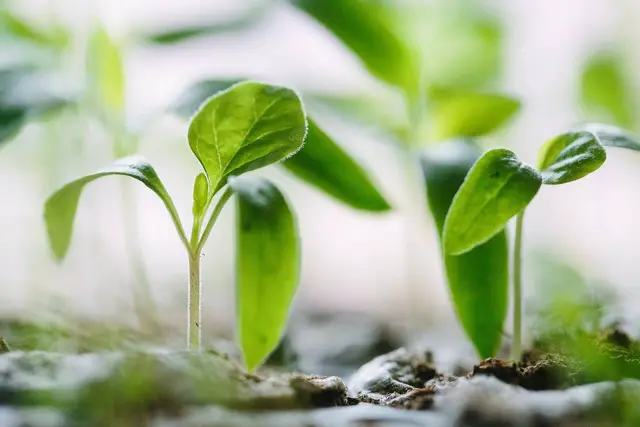
What Is the Electromagnetic Spectrum?
The electromagnetic spectrum includes x-rays, microwaves, infrared, ultraviolet light, gamma rays, visible light, and radio waves. All are types of light that travel in waves emitted by the sun.
Plants absorb electromagnetic energy to produce sugars, a process known as photosynthesis. However, plants don’t absorb all types of electromagnetic light equally.
Most artificial lighting used for plant growth is full-spectrum, meaning it consists of all types of light on the electromagnetic spectrum.
Visible light is the only type we can see as the human eye can only detect wavelengths from 380 to 700 nanometers.
This range includes colors such as red, which has the longest wavelength at approximately 620 to 750 nanometers. Violet light has the shortest wavelength at around 380 to 450 nanometers.
What Is Photosynthetically Active Radiation?
Photosynthetically active radiation (PAR) is the range of radiation that plants can use in photosynthesis. All PAR is visible light ranging from 400 to 700 nanometers, including violet, blue, green, yellow, and red.
How Do Different Colors of Light Affect Plant Growth?
When you begin to remove light sources from the electromagnetic spectrum, it affects how plants grow. Each energy source plays a role in plant growth, but plants use some more than others.
How Do Plants Grow Under Full Spectrum – White Light?
White light is a combination of all colors on the visible spectrum. The sun produces white light, so we can assume that this is best for plant growth. But, the sun emits more than just the light we can see, so full-spectrum lights are still inferior to a natural source.
Plants with access to white light produce healthier foliage than any visible light source alone.
However, white light can inhibit auxin hormones in some plants, which causes a slower growth rate. Introducing UV to white light as a supplement improves the growth of plants. This shows that plants need more than PAR to live a healthy life.
Check out this video below that shows a time lapse of how lettuce grows under a white light vs. a red/blue light.
How Does Ultraviolet Light Affect Plant Growth?
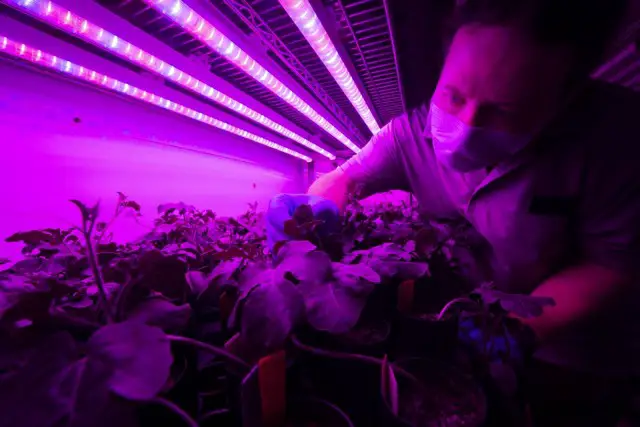
UV light is what causes sunburn. Similarly, exposing plants to UV light for long periods can cause leaves to scorch.
There are three types of UV radiation; UVA, UVB, and UVC. UV light falls outside the photosynthetically active radiation range. However, it still plays a crucial role in plant growth.
In the correct doses, a UV light will help:
- Generate oils that protect leaves against UV rays.
- Establish defenses against pests, bacteria, and fungus.
- Improve the taste of fruit and vegetables.
- Improve the smell of plants.
- Increase root mass.
UV light is also known to speed up the germination process and prepare seedlings for more intense light sources. When growing seedlings indoors, transferring them outdoors can shock their system as light intensity increases. Exposing plants to UV light reduces shock time, which helps speed up growth and production.
Providing plants with these defenses ensures healthy growth.
How Do Plants Grow In Violet Light
Violet light has some of the same benefits as UV, but it’s less dangerous for plants. It helps enhance the taste of fruits and vegetables and intensifies the color and smell. Violet rays can also improve the efficiency of antioxidant activity, which is essential for plant defenses.
How Do Plants Grow In Blue Light
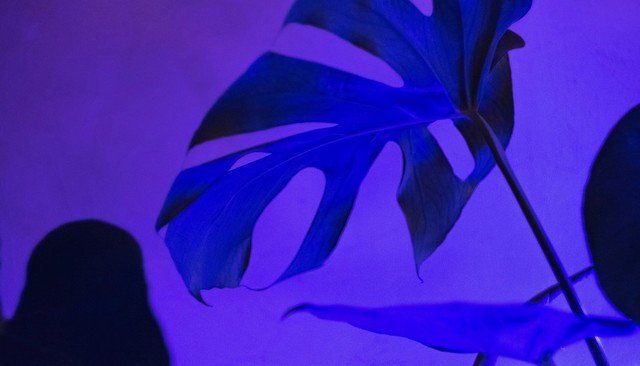
Plants require blue light for healthy plant growth as it optimizes photosynthetic reactions. You can use light-emitting diode (LED) lights or fluorescent lights to substitute blue photons in an indoor setting.
Blue light helps produce chlorophyll, which increases the plant’s ability to draw energy from the sun. Plants that grow in an abundance of blue light, usually have strong stems and leaves.
It also regulates the opening of the stomata, which are tiny pores on a plant’s leaves. Stomata are imperative for photosynthesis, as they’re responsible for the consumption of carbon dioxide and controlling water loss.
High-intensity blue light encourages photomorphogenesis, which increases growth rate and produces fuller-looking plants. However, exposure to blue light can suppress outward growth, and plants are usually shorter than those grown without blue light.
During springtime, blue light is at its peak. This abundance of blue encourages dormant plants to begin growing again.
Does Green Light Affect Plant Growth
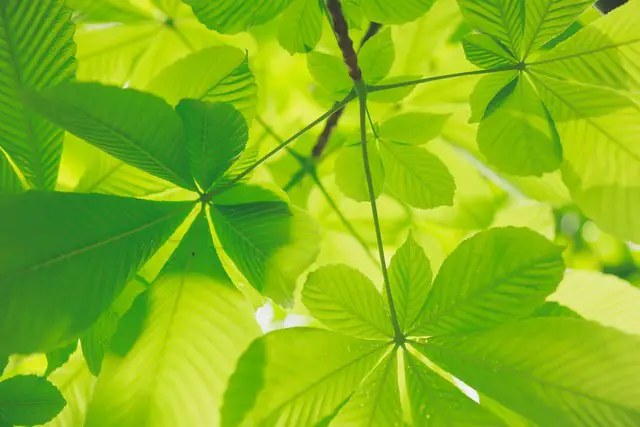
Most plants possess a green hue because they reflect more green than any other color on the visible light spectrum. Green light may be less efficient than most light, but it’s still helpful in the process of photosynthesis.
The sun radiates similar proportions of blue, red, and green light. Different quantities of each color reach leaves and chloroplasts in disparate locations of the leaf and canopy.
Green light can penetrate deeper than any other visible light. It even manages to get through a bushy leaf canopy and prompts a photosynthetic response from lower-lying leaves. This keeps leaves beneath the canopy green and healthy.
Can Plants Grow In Yellow Light
Many say that yellow light is the least effective for plant growth, and it’s often reflected like green light.
However, a study about how yellow light promotes growth in Chinese medicinal herbs shows us that it yields a higher level of flavonoids. It also appears that yellow light encourages more shoots per plant and has beneficial effects on net photosynthesis.
How Do Plants Grow In Red Light?
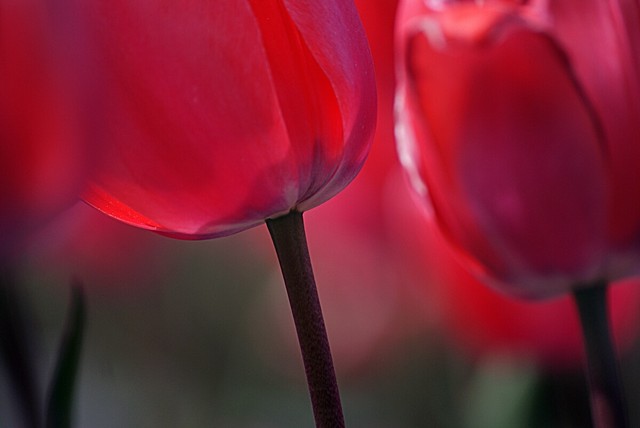
Red light possesses the longest wavelength in the color spectrum and has the least energy. You can use LED lights or incandescent bulbs to supplement red light for indoor plants. However, incandescent lights can get hot, so it’s best not to use them on houseplants or have them too close.
Chlorophyll absorbs red light and converts it to energy, which it uses for metabolism to perform photosynthesis.
Red plays a massive role in the flowering stages and seed production of a plant.
Exposure to red light helps flowering and fruiting. It can also prolong flowering during a dark period. This isn’t always a good thing for crops, as it can delay harvesting.
Seed production increases with red light, but it produces mostly-male plants. So, if you’re looking for a female plant, it would be best to restrict exposure to red lights.
Red light also causes some plants to form a bitter taste as it encourages the production of certain oils in the leaves.
Does Orange Light Affect Plant Growth?
Chlorophyll absorbs darker orange light, which is closer to red on the spectrum. Plants use it for photosynthesis in the same way they use red light. Chlorophyll absorbs more orange/red light than any other color. However, overall, a higher percentage of red is used.
How Does Far-Red Light Affect Plant Growth?
Far-red light has wavelengths between 700 and 780 nanometers and is barely visible to the human eye. It falls between red and infrared in the electromagnetic energy spectrum.
Although far-red light isn’t in the definition of PAR, it still plays a role in photosynthesis when working together with visible light.
Plants absorb approximately 30 percent of far-red light. Studies show that when adding far-red to white light photons, efficiency of photosynthesis increases. Consequently, they argue that the definition of PAR should include far-red light and stretch to 750 nanometers.
Like red light, far-red affects the germination and flowering process of the plant. It enhances the plant’s ability to detect light, which helps them understand the difference between night, day, and shade.
For example, an increase in far-red photons tells plants they’re shaded. A plant’s response to this is to try and grow taller than whatever is in its way. Another response may be early flowering in an attempt to germinate before resources are gone completely.
How Does Red and Blue Light Affect Plant Growth?

Red and blue colored light are an integral part of plant development, and they work together coherently.
Red is the most efficient light color in terms of photosynthesis. However, we can’t grow plants in red light alone as it causes unhealthy growth, such as elongated stems. Introducing blue light alongside red helps keep plants compact and full of foliage.
There are grow lights available called ‘blurple’ lights which appear purple, using a mixture of red and blue diodes. People often use blurple lights in greenhouses that already receive natural sunlight to enhance growth and production.
How Does Infrared Light Affect Plant Growth?
Like UV and far-red light, infrared falls outside the visible light spectrum, and it doesn’t affect how plants photosynthesize.
Instead, the effect of infrared is due to the heat it radiates, which can manipulate the plant into thinking it’s daylight. This helps regulate stem growth, flowering, and leaf expansion.
Infrared can also help plants struggling to photosynthesize due to coverage from other plants. By radiating heat, it encourages smaller plants to grow above the canopy. However, too much infrared can harm plants.
What Color Light Is Best for Plants?
Most of the colors on the visible light spectrum affect plant growth, but red and blue lights are the most beneficial. However, these aren’t the only colors your plant uses to stay healthy, and it needs all light energy in the PAR range to optimize plant growth.
The best color light for plants will always be natural or full-spectrum light. You can supplement it with other light energy for manipulation purposes. For example, adding more red and blue light to natural or full-spectrum light can speed up growth and production.
However, there are also some benefits of radiation outside the PAR range. This indicates that more of the electromagnetic spectrum contributes to plant growth and not just light energy we see.
How Do You Know if Your Plants Are Growing Well?
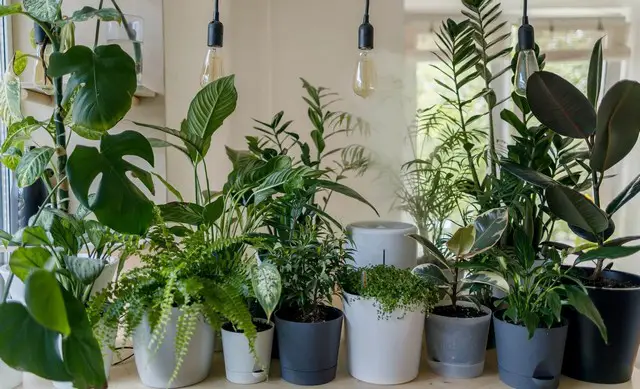
There are several ways to know your plant is happy and growing well.
Rapid growth: If a plant receives the nutrients, oxygen, light, and care, it’ll grow healthy. Plants usually grow fast when they’re healthy. Lack of light can stunt growth and plants may look fragile if they’re not living in the right conditions.
Foliage: Foliage is an excellent indication of whether a plant is healthy or not. Healthier plants will display luscious green foliage, with the exception of bi-color and variegated species. They’ll also be bushier than an unhealthy plant.
The color of the leaves will be consistent if your plant is happy. Any discoloration of your plant may be a sign that something is wrong.
If your plant begins to lose leaves, it’s a sign that something is wrong. Your plant may be lacking in light, nutrients, or oxygen. There’s also a possibility of disease or pests.
Roots: Plant roots are usually under the soil and often inside a pot, so they’re not the easiest things to check. However, leaves can help you diagnose root rot. Signs of root rot include loss or discoloration of foliage.
Pests: Look out for pests such as spider mites on foliage, in the soil, or on the roots of your plant. A plant that’s growing well will be pest-free.
Final Thoughts
While red and blue light are the most effective for plant growth, colors in the mid-range still have benefits. Full-spectrum lights are best if you’re growing indoors, but you may want to include supplemental light if you’re trying to manipulate a specific trait.
However, nothing can beat natural light, as it contains the visible spectrum, UV, far-red, and infrared energy.
Although UV and infrared don’t contribute to photosynthesis, they encourage growth through heat and protect growth by establishing plant defenses. Far-red is also out of the PAR range, but plants will absorb it for photosynthesis.
Resources;
https://iopscience.iop.org/article/10.1088/1742-6596/1245/1/012089
https://www.canr.msu.edu/news/green_light_is_it_important_for_plant_growth
https://www.sciencedirect.com/science/article/abs/pii/S1011134418314477

